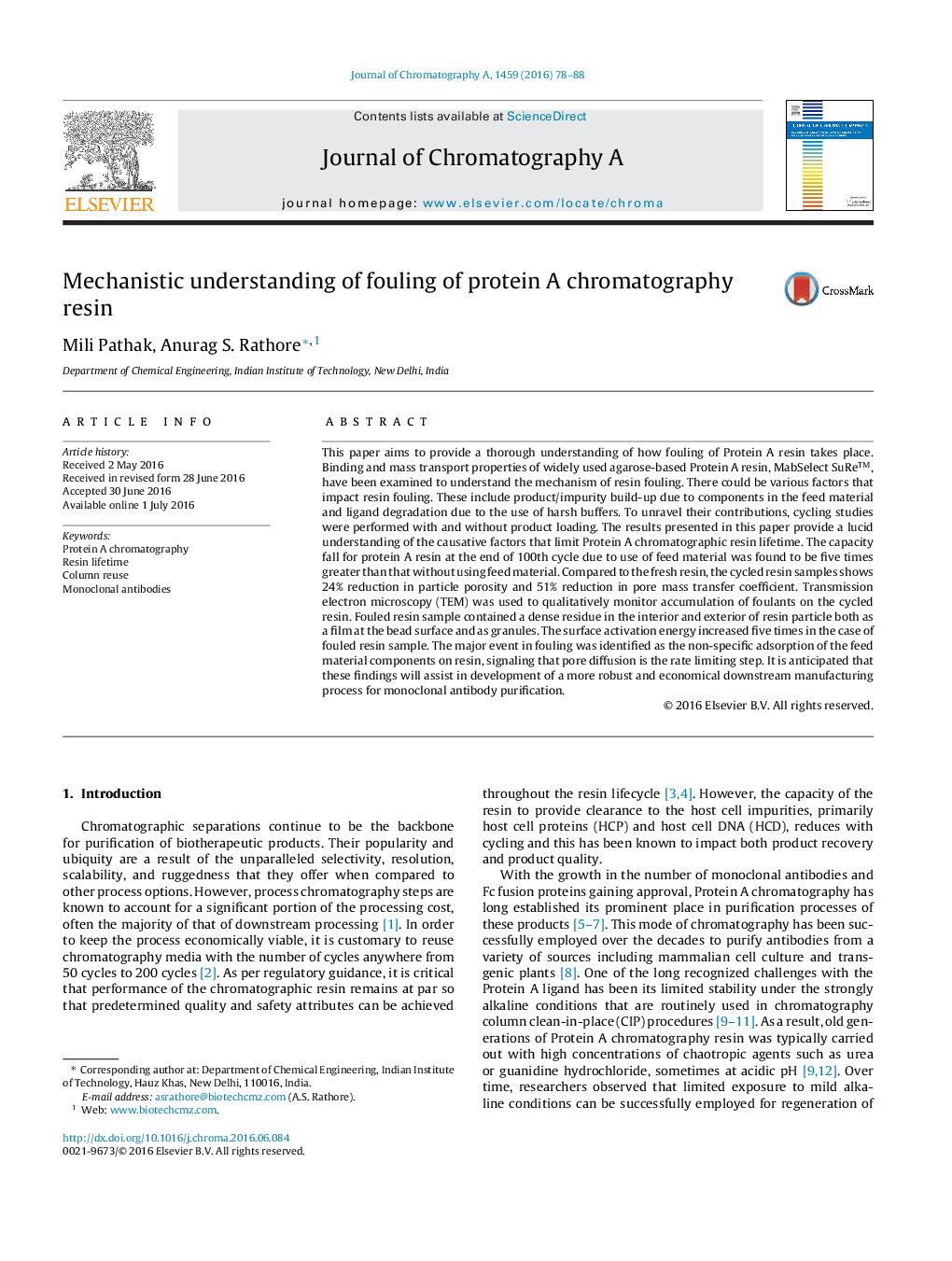| کد مقاله | کد نشریه | سال انتشار | مقاله انگلیسی | نسخه تمام متن |
|---|---|---|---|---|
| 1200101 | 1493467 | 2016 | 11 صفحه PDF | دانلود رایگان |
• Changes in kinetic and mechanism of adsorption upon resin reuse.
• Effect of processing buffer and feed material on resin fouling.
• Changes in porosity and mass transfer properties upon resin reuse.
• Deposition of foulants on resin upon cycling.
This paper aims to provide a thorough understanding of how fouling of Protein A resin takes place. Binding and mass transport properties of widely used agarose-based Protein A resin, MabSelect SuRe™, have been examined to understand the mechanism of resin fouling. There could be various factors that impact resin fouling. These include product/impurity build-up due to components in the feed material and ligand degradation due to the use of harsh buffers. To unravel their contributions, cycling studies were performed with and without product loading. The results presented in this paper provide a lucid understanding of the causative factors that limit Protein A chromatographic resin lifetime. The capacity fall for protein A resin at the end of 100th cycle due to use of feed material was found to be five times greater than that without using feed material. Compared to the fresh resin, the cycled resin samples shows 24% reduction in particle porosity and 51% reduction in pore mass transfer coefficient. Transmission electron microscopy (TEM) was used to qualitatively monitor accumulation of foulants on the cycled resin. Fouled resin sample contained a dense residue in the interior and exterior of resin particle both as a film at the bead surface and as granules. The surface activation energy increased five times in the case of fouled resin sample. The major event in fouling was identified as the non-specific adsorption of the feed material components on resin, signaling that pore diffusion is the rate limiting step. It is anticipated that these findings will assist in development of a more robust and economical downstream manufacturing process for monoclonal antibody purification.
Journal: Journal of Chromatography A - Volume 1459, 12 August 2016, Pages 78–88
